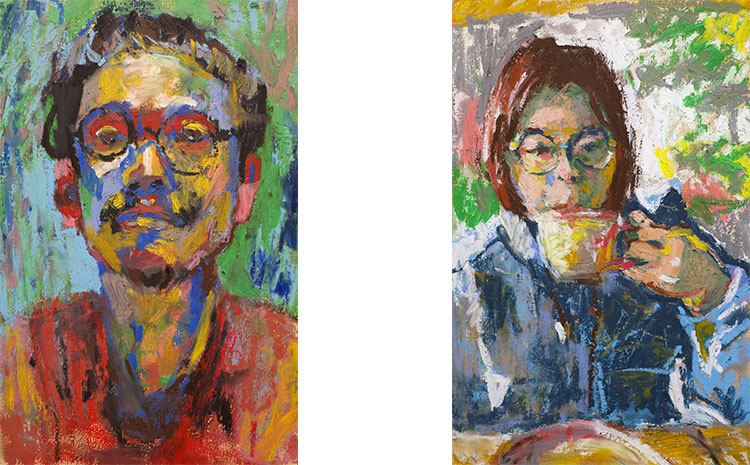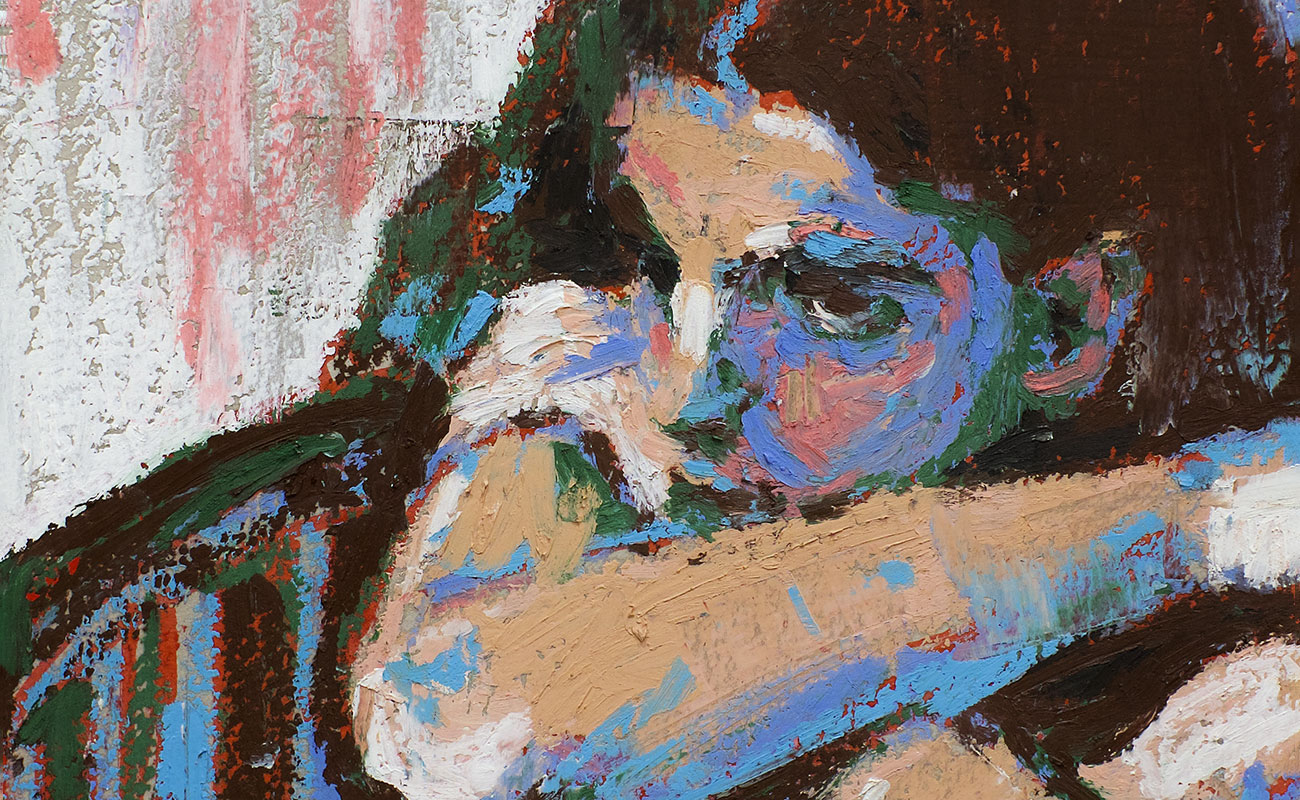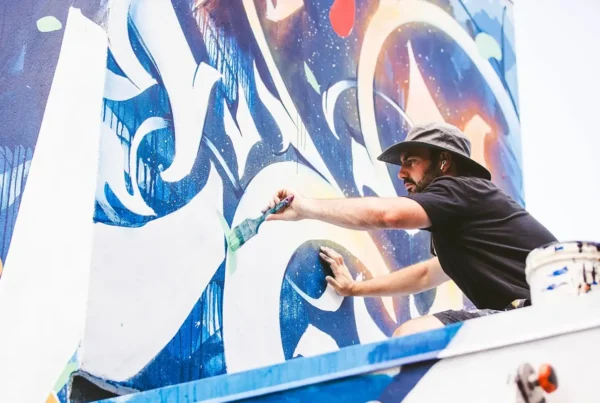“I think this freedom is vital to an artist’s work and is necessary in the creation of something true and sublime.”
The Evolution of Jitao: From Tech Design to Oil Pastels
Jitao (繼濤), a Filipino-American artist currently residing in Taiwan, embraces his Taiwanese moniker, which signifies “continuous great waves.” Born Nate Navasca in 1989, he spent his early years in Japan with his Filipino family before relocating to the serene suburban landscape of Virginia Beach, United States.
In his youth, Navasca nurtured a passion for drawing, which eventually led him to study architecture in college. However, he yearned for greater creative freedom and transitioned to graphic design during his second year. Upon graduating, Jitao briefly entered the advertising industry before a fortuitous opportunity propelled him into the dynamic realm of technology startups in Silicon Valley. For six years, he honed his expertise as a designer for phone and web interfaces, culminating in his role at Robinhood, where he crafted products now utilized by millions.
In 2019, Jitao departed the tech industry, driven by a persistent desire for artistic autonomy and a longing to revisit his childhood aspiration of becoming an artist. The following year, he and his wife, also a former tech professional, journeyed to Taiwan to rejuvenate and contemplate their future paths. By 2022, Jitao committed to pursuing a full-time career as an artist, a decision he has now embraced for over a year.
Throughout his tenure in technology startups, Jitao’s design philosophy centered on minimalist functionality, prioritizing clarity and usability in digital products. His artistic practice now serves as a striking counterpoint to this earlier chapter in his life. Liberated from the confines of rigid lines, rectangles, and grid systems, Jitao revels in the spontaneity of observation and mark-making. Furthermore, he employs color not merely as an instrument for hierarchical emphasis within interfaces, but as a means of evoking emotion and expressing his artistic vision.
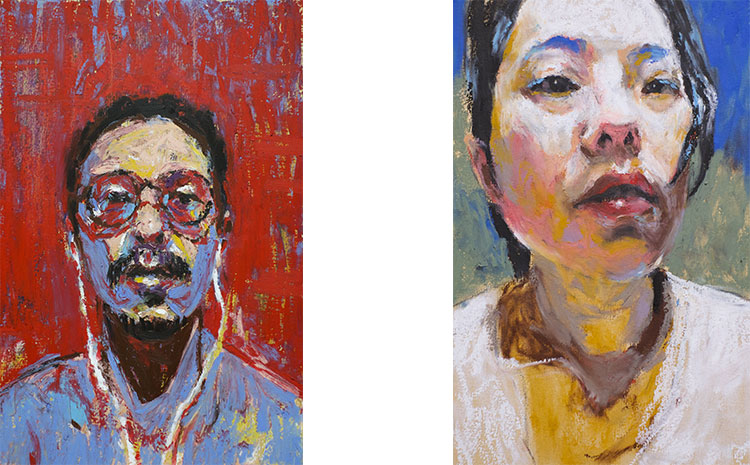
A Childhood Passion Rekindled: Jitao’s Artistic Exploration
From an early age, Jitao displayed a natural affinity for art, with memories of drawing even before his earliest recollections. His parents played a pivotal role in fostering his creative inclinations, serving as his initial audience and surrounding him with art prints of renowned artists such as Picasso and Van Gogh. Although he found amusement in the fact that these prints were not authentic, their presence likely influenced him on a subconscious level.
During Jitao’s childhood, he was particularly drawn to the human figure and portraiture. However, like many American children growing up in the 90s, his primary artistic focus was on sketching beloved fictional characters like Goku and Batman. After a hiatus of over a decade, Jitao found the financial stability and confidence to return to his artistic pursuits and chase his childhood dreams.
In 2022, Jitao embarked on a journey of artistic exploration, starting with oil painting. He diligently studied still life, portraiture, and landscape, striving to master the fundamentals of light, color, and form. However, after several months, he transitioned to oil pastels, seeking a more immediate and intimate medium. Jitao discovered that the meticulous nature of oil painting hindered his ability to achieve a state of flow, which he found essential in capturing fleeting observations and sensations.
The tactile immediacy of oil pastels enabled Jitao to minimize the gap between observation and mark-making, evoking a sense of meditative focus akin to acknowledging a thought before letting it go. This shift in medium ultimately led to a change in his artistic focus: he began to concentrate on light and color. Upon recognizing a weakness in these areas within his early work, Jitao decided to hone these skills, transforming them into the primary driving forces behind his current artwork.
Jitao’s contemporary creations emphasize transient sensations and observations of light and color, all within the context of portraiture. By employing the universally recognized framework of portraiture, his art effortlessly navigates the spectrum between representational and abstract. This approach allows Jitao to convey the ethereal and ephemeral nature of perception with greater purity and impact.

The Art of Perception: Jitao’s Approach to Light, Color, and Abstraction
From the earliest moments of life, humans are innately skilled at deciphering facial expressions. This universal aptitude for facial recognition allows Jitao to experiment with abstraction in his artwork while retaining a degree of representation. He posits that the amalgamation of colors and shapes, combined with an individual’s cognitive understanding of the world, shapes the way people truly perceive their surroundings.
In Jitao’s artistic approach, he places significant emphasis on the sensations of light and color, deliberately eschewing intricate details. He asserts that human perception differs from that of a camera; instead of perceiving every minute element simultaneously, people’s eyes dart back and forth, capturing the essence of light and color in an irregular rhythm.
When discussing his selection of colors, Jitao characterizes it as a natural emphasis. He accentuates subtle details, such as the cool greens in the skin’s shadows or the red hue of an ear illuminated by light, to underscore the beauty of nature. Ultimately, Jitao’s artistic choices stem from his interpretation of reality and the way he observes it.
Jitao’s creative process commences when he encounters a reference photo with intriguing qualities, such as light, color, or composition. He may utilize a photograph he has taken, typically of himself or his wife, or a reference image shared within his online artist community. This group of artists exchanges free-to-use reference photos through a Telegram channel.
Initially, Jitao creates small sketches to explore the composition, color, and values of the reference image. Once he finalizes the fundamental aspects, such as composition, light quality, and color palette, he proceeds to the larger piece. By establishing general proportions and value shapes, Jitao lays the groundwork for his oil pastel work. The bulk of his process involves observing the reference, making a mark, and repeating this cycle until he feels the artwork embodies a comprehensive representation of his sensations and observations.
Throughout the process, Jitao utilizes a palette knife to scrape away areas, either to introduce texture or rectify hastily drawn marks. This stage is the most unpredictable, yet it allows for the emergence of the most sublime aspects of the image. The culmination of Jitao’s creative process is often abrupt, transitioning from a state of deep concentration and mark-making to a sudden realization of a complete, finished piece.
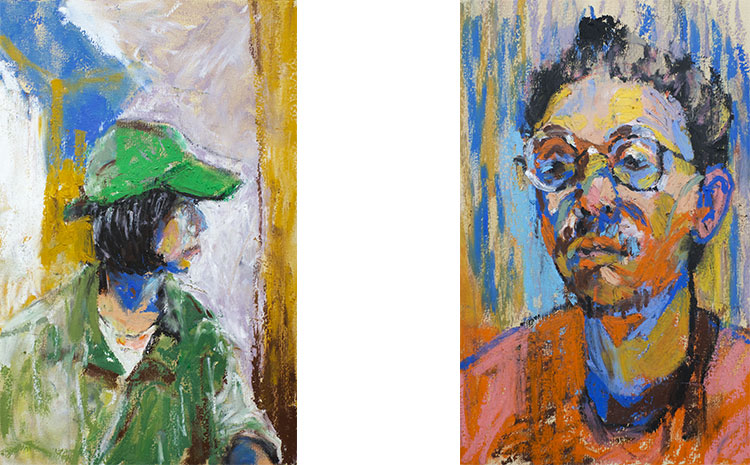
Insights and Aspirations: Jitao on Solitude, Learning, and the Future of His Art
Upon first encountering Andre Derain’s portrait of Matisse, Jitao was captivated by what he perceived as the ideal blend of abstraction and representation. The harmonious colors and confident, simple application of paint left an indelible impression on the artist, serving as a constant source of inspiration for his work over the past year and encouraging him to follow the creative path that feels most authentic.
Jitao envisions an idyllic workspace by the sea, bathed in natural light and accompanied by his wife and two cats. This sanctuary of solitude would allow him to remain undisturbed by the distractions of the world.
Jitao believes that working in solitude, away from prying eyes and unsolicited feedback, offers significant benefits. This environment allows an artist to explore their thoughts without interruption, free from the constraints of judgment or distraction. According to Jitao, this sense of freedom is essential for producing art that is both genuine and transcendent.
While Jitao hesitates to offer advice to burgeoning artists, considering himself to still be in their ranks, he can speak from his experience in achieving success in other fields. He maintains that mastering art, design, or even cooking involves cultivating awareness of one’s actions and intentions. It is crucial for artists to recognize their strengths and weaknesses and to focus on honing their skills in a deliberate, targeted manner.
For instance, if an artist’s rendering of light requires improvement, they should deconstruct the various aspects of light and learn each through dedicated study and practice. Jitao encourages specificity in learning and improving, rather than striving for vague notions such as “better light.” As an example, he suggests exercises that explore how natural light’s warmth generates cool shadows or how a light source from above shapes the face. Specificity is the key to true growth and development.
Jitao draws a parallel to an interview with jazz pianist Bill Evans (https://youtu.be/YEHWaGuurUk), who emphasizes the importance of addressing a problem in a realistic, truthful, and accurate manner, no matter how elementary the level. In Evans’ view, it is better to engage with a small part of a problem with honesty and precision than to approximate the entire issue. Jitao echoes this sentiment: Be specific!
In terms of future aspirations, Jitao is eager to create larger works that maintain the style he has developed in his smaller pieces. Although he has experimented with larger formats, none have yet achieved the desired effect. However, Jitao is excited about the prospect of further exploration and the moment when everything aligns. He hopes that a larger scale will enable viewers to immerse themselves in his art with greater intensity.
